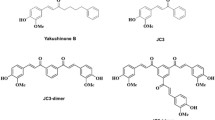Abstract
Introduction
Graves’ orbitopathy (GO) is an autoimmune inflammatory disorder affecting the orbit around the eye. Astragaloside IV (AS-VI) is the main active ingredient of the Chinese herbal medicine Huangqi (Radix Astragali Mongolici). AS-IV exhibits antioxidant and anti-inflammatory properties, and shows therapeutic potential in a number of ischemic and inflammatory diseases; however, its pharmaceutical activities in GO remain undefined.
Materials and methods
In this study, we investigated the effects of AS-IV on interleukin (IL)-1β-induced orbital fibroblast inflammation in vitro and GO orbital inflammation and ocular histopathological changes in vivo, as well as the underlying mechanisms responsible for these effects.
Results and conclusion
The results show that IL-1β increased mRNA expression of the inflammatory cytokines IL-6, IL-8, TNF-α, and MCP-1 in cultured orbital fibroblasts. This IL-1β-induced inflammation was accompanied by increased autophagic activity as reflected in increased Beclin-1 and Agt-5 expression, as well as LC3-I to LC3-II conversion. Pretreatment with the autophagy inhibitors 3-MA and bafilomycin A1, or silencing of autophagy-related proteins Beclin-1 and Atg-5, prevented IL-1β-induced orbital fibroblast inflammation, while pretreatment with the autophagy activator rapamycin had the opposite effects. These data suggested that autophagy was involved in GO orbital inflammation. AS-IV treatment significantly decreased IL-1β-induced inflammatory cytokine production in orbital fibroblasts in vitro and attenuated GO orbital inflammation, fat accumulation, collagen deposition, and macrophage infiltration in vivo. These in vitro and in vivo protective effects of AS-IV against GO were accompanied by decreased autophagic activities in orbital fibroblasts and GO orbital tissues, respectively. Collectively, our findings suggested that AS-IV protects against GO through suppression of autophagy. Thus, AS-IV may have preventive benefits for GO.






Similar content being viewed by others
References
Burch HB, Cooper DS. Management of graves disease: a review. JAMA. 2015;314:2544–54.
Bahn RS. Graves’ ophthalmopathy. N Engl J Med. 2010;362:726–38.
Smith TJ. Pathogenesis of Graves’ orbitopathy: a 2010 update. J Endocrinol Invest. 2010;33:414–21.
Stiebel-Kalish H, Robenshtok E, Hasanreisoglu M, Ezrachi D, Shimon I, Leibovici L. Treatment modalities for Graves’ ophthalmopathy: systematic review and metaanalysis. J Clin Endocrinol Metab. 2009;94:2708–16.
Wiersinga WM. Advances in treatment of active, moderate-to-severe Graves’ ophthalmopathy. Lancet Diabetes Endocrinol. 2017;5:134–42.
Yoon JS, Lee HJ, Chae MK, Lee EJ. Autophagy is involved in the initiation and progression of Graves’ orbitopathy. Thyroid. 2015;25:445–54.
Tian YQ, Ding P, Yan XH, Hu WJ. [Discussion on quality control of preparations with cortex moutan in volume I pharmacopoeia of People’s Republic of China (2005 edition)]. Zhongguo Zhong Yao Za Zhi. 2008;33:339–41.
Ren S, Zhang H, Mu Y, Sun M, Liu P. Pharmacological effects of Astragaloside IV: a literature review. J Tradit Chin Med. 2013;33:413–6.
Hu JY, Han J, Chu ZG, Song HP, Zhang DX, Zhang Q, et al. Astragaloside IV attenuates hypoxia-induced cardiomyocyte damage in rats by upregulating superoxide dismutase-1 levels. Clin Exp Pharmacol Physiol. 2009;36:351–7.
Huang XP, Ding H, Lu JD, Tang YH, Deng BX, Deng CQ. Effects of the combination of the main active components of astragalus and panax notoginseng on inflammation and apoptosis of nerve cell after cerebral ischemia-reperfusion. Am J Chin Med. 2015;43:1419–38.
Wang B, Chen MZ. Astragaloside IV possesses antiarthritic effect by preventing interleukin 1beta-induced joint inflammation and cartilage damage. Arch Pharm Res. 2014;37:793–802.
Xu H, Wang CY, Zhang HN, Lv CY, Wang YZ. Astragaloside IV suppresses inflammatory mediator production in synoviocytes and collageninduced arthritic rats. Mol Med Rep. 2016;13:3289–96.
Chen CR, Pichurin P, Nagayama Y, Latrofa F, Rapoport B, McLachlan SM. The thyrotropin receptor autoantigen in Graves disease is the culprit as well as the victim. J Clin Invest. 2003;111:1897–904.
Russell RC, Tian Y, Yuan H, Park HW, Chang YY, Kim J, et al. ULK1 induces autophagy by phosphorylating Beclin-1 and activating VPS34 lipid kinase. Nat Cell Biol. 2013;15:741–50.
Tanida I. Autophagosome formation and molecular mechanism of autophagy. Antioxid Redox Signal. 2011;14:2201–14.
Tanida I, Ueno T, Kominami E. LC3 and autophagy. Methods Mol Biol. 2008;445:77–88.
Lapaquette P, Guzzo J, Bretillon L, Bringer MA. Cellular and molecular connections between autophagy and inflammation. Mediators Inflamm. 2015;2015:398483.
Shibutani ST, Saitoh T, Nowag H, Munz C, Yoshimori T. Autophagy and autophagy-related proteins in the immune system. Nat Immunol. 2015;16:1014–24.
Yang Z, Goronzy JJ, Weyand CM. Autophagy in autoimmune disease. J Mol Med (Berl). 2015;93:707–17.
Liu JN, Suh DH, Trinh HK, Chwae YJ, Park HS, Shin YS. The role of autophagy in allergic inflammation: a new target for severe asthma. Exp Mol Med. 2016;48:e243.
Marique L, Senou M, Craps J, Delaigle A, Van Regemorter E, Werion A, et al. Oxidative stress and upregulation of antioxidant proteins, including adiponectin, in extraocular muscular cells, orbital adipocytes, and thyrocytes in Graves’ disease associated with orbitopathy. Thyroid. 2015;25:1033–42.
Acknowledgements
This study was supported by the National Natural Science Foundation of China (Grant no. 81373617, 81072793, 30772800), Shanghai Committee of Science and Technology Research Projects (Grant no. 15401930400).
Author information
Authors and Affiliations
Corresponding author
Ethics declarations
Ethical approval
All animals were handled in accordance with the Guide for the Care and Use of Laboratory Animals. All animal experiments were approved by the Longhua Hospital Ethics Committee of China.
Conflict of interest
The authors declare that there were no conflicts of interest related to this study.
Additional information
Responsible Editor: John Di Battista.
Electronic supplementary material
Below is the link to the electronic supplementary material.
Rights and permissions
About this article
Cite this article
Li, H., Zhang, Y., Min, J. et al. Astragaloside IV attenuates orbital inflammation in Graves’ orbitopathy through suppression of autophagy. Inflamm. Res. 67, 117–127 (2018). https://doi.org/10.1007/s00011-017-1100-0
Received:
Revised:
Accepted:
Published:
Issue Date:
DOI: https://doi.org/10.1007/s00011-017-1100-0




